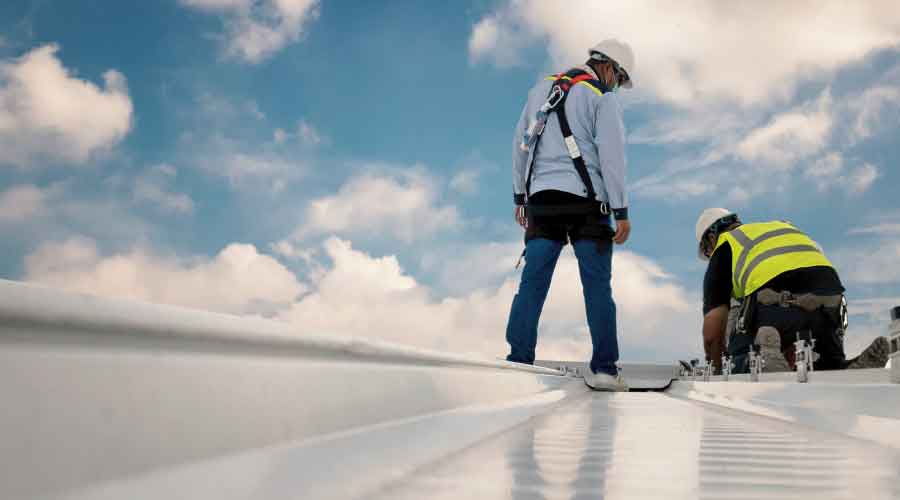Common Problems Found During Roof Inspections
Until leaks appear, roofs are often out of sight and out of mind. The simple truth is that roof deficiencies do not get better with time, and ignoring maintenance problems can create other more deep-seated building concerns. Roof inspections often reveal common problems but also some not-so-predictable issues. We'll discuss the 10 most common problems, including those arising from abandoned equipment, new equipment, and storm damage.
The National Roofing Contractors Association and most industry professionals recommend inspecting roofs twice each year, once after the hottest weather, and again after the coldest weather. Weather events such as high winds or hail should also trigger a thorough review. The purpose of regular roof inspections is to discover and fix minor problems before they become a major expense. Roofs that are inspected regularly tend to be better maintained, because the act of inspecting a roof is indicative of well-managed facilities. Even when roofs are inspected on a regular basis, however, inspections can still reveal surprises.
Owners often believe that an expert or roof consultant is required for routine inspections. To the contrary, facility managers or facility staff, armed with a detailed checklist, can conduct most routine semi-annual inspections effectively. These routine inspections often reveal many common problems. Here are the 10 most common:
Abandoned Equipment
When rooftop equipment is upgraded or replaced, facility managers should always provide for the removal of the older or abandoned equipment. Adaptive reuse of buildings and spaces may cause exhaust vents, skylights, and mechanical equipment to be rendered useless or obsolete. Depending on the roof's age and condition, facility managers should consider not only removing abandoned equipment but closing up the openings and repairing the roof with compatible roofing material.
Loose objects from abandoned equipment can become airborne and damage the roof. In addition, such objects when stationary can obstruct drainage, provide habitation for birds or rodents, and puncture the roof covering.
New Equipment
Old roof mechanical equipment is often upgraded and replaced. It is common in such cases for mechanical engineers and mechanical contractors to design and install the replacement equipment — which may involve retrofitting older curbs or making new larger roof penetrations. New electrical and plumbing lines may be needed. A common missing link in the process is not engaging a qualified roofing contractor early on to design and install the roof flashings. It is not unusual for a facility manager inspecting a roof to find improper flashings and significant damage to the roof following a mechanical equipment upgrade project.
For example, the height of new curbs should be designed in anticipation that thicker roof insulation may be installed at the time of a future reroofing project. Well-intentioned mechanical contractors may not think of that. Roofing contractors understand minimum roofing industry heights and clearances and will perform work accordingly.
New rooftop equipment should have all curbs, mountings, and roof flashings properly installed by the roofing contractor, not the mechanical contractor.
Storm Damage
Storm damage can take several forms. A storm can, of course, blow off a portion of the roof. High winds can also damage roofs and adjacent property with flying projectiles, such as loose mechanical equipment access panels or other debris left on the roof. Broken tree limbs and branches are another common source of storm damage on single-story buildings.
Another common type of storm damage is caused by hail. Most roof coverings today have been tested and rated as hail-resistant, but hail-resistant does not mean hail-proof. It merely means the roof covering has been tested to resist failure-inducing damage from all but the largest size of hailstones.
Facility managers should consider having an independent roof consultant inspect roofs after a major storm to assess damage and assist with filing insurance claims, when appropriate. An independent consultant is one who does not distribute, sell, or promote the sale of roofing materials.
Related Topics:













